Abstract
When assessing the impact of radiation exposure it is common practice to present the final conclusions in terms of excess lifetime cancer risk in a population exposed to a given dose. The present investigation is mainly a methodological study focusing on some of the major issues and uncertainties involved in calculating such excess lifetime risks and related risk projection methods. The age-constant relative risk model used in the recent analyses of the cancer mortality that was observed in the follow-up of the cohort of A-bomb survivors in Hiroshima and Nagasaki is used to describe the effect of the exposure on the cancer mortality. In this type of model the excess relative risk is constant in age-at-risk, but depends on the age-at-exposure. Calculation of excess lifetime risks usually requires rather complicated life-table computations. In this paper we propose a simple approximation to the excess lifetime risk; the validity of the approximation for low levels of exposure is justified empirically as well as theoretically. This approximation provides important guidance in understanding the influence of the various factors involved in risk projections. Among the further topics considered are the influence of a latent period, the additional problems involved in calculations of site-specific excess lifetime cancer risks, the consequences of a leveling off or a plateau in the excess relative risk, and the uncertainties involved in transferring results from one population to another. The main part of this study relates to the situation with a single, instantaneous exposure, but a brief discussion is also given of the problem with a continuous exposure at a low-dose rate.
Full text
PDF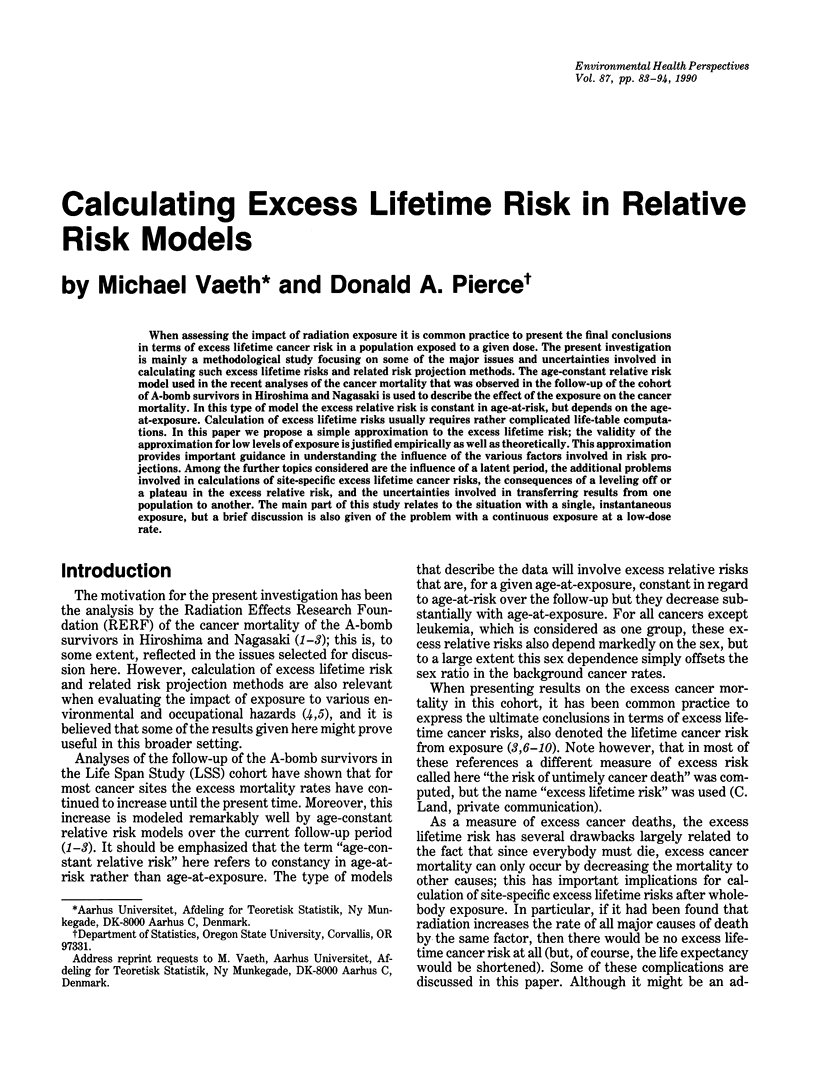
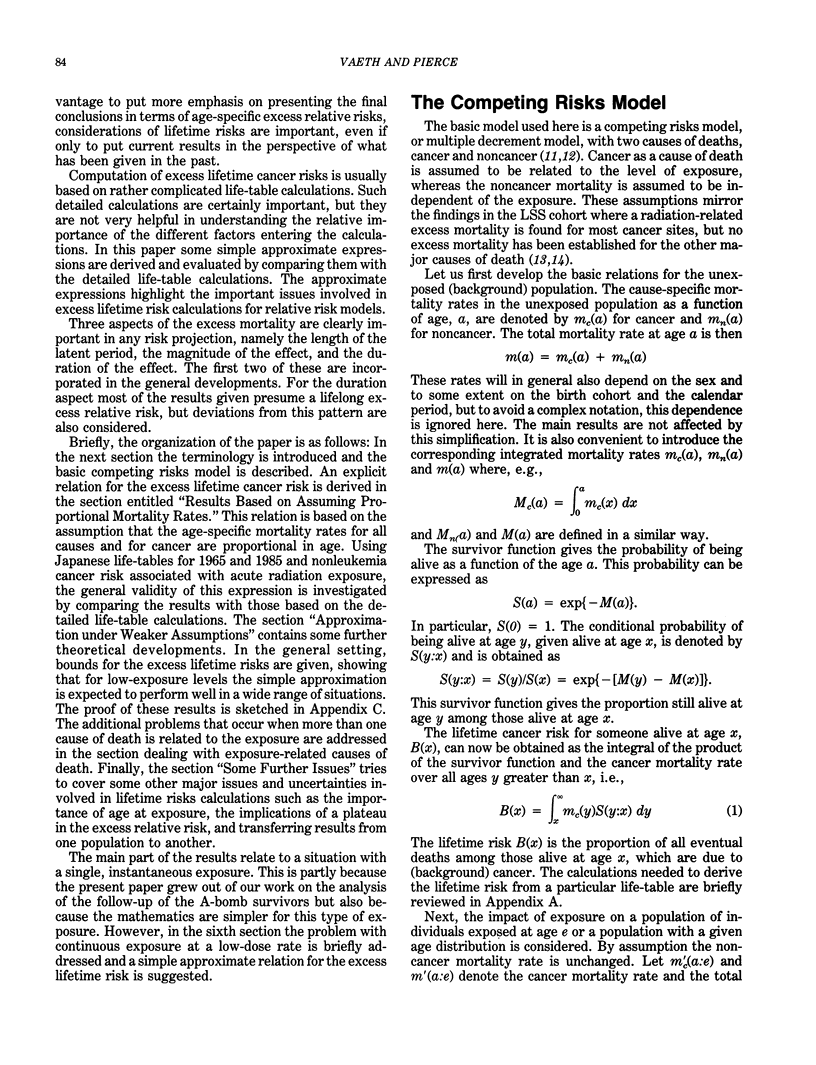
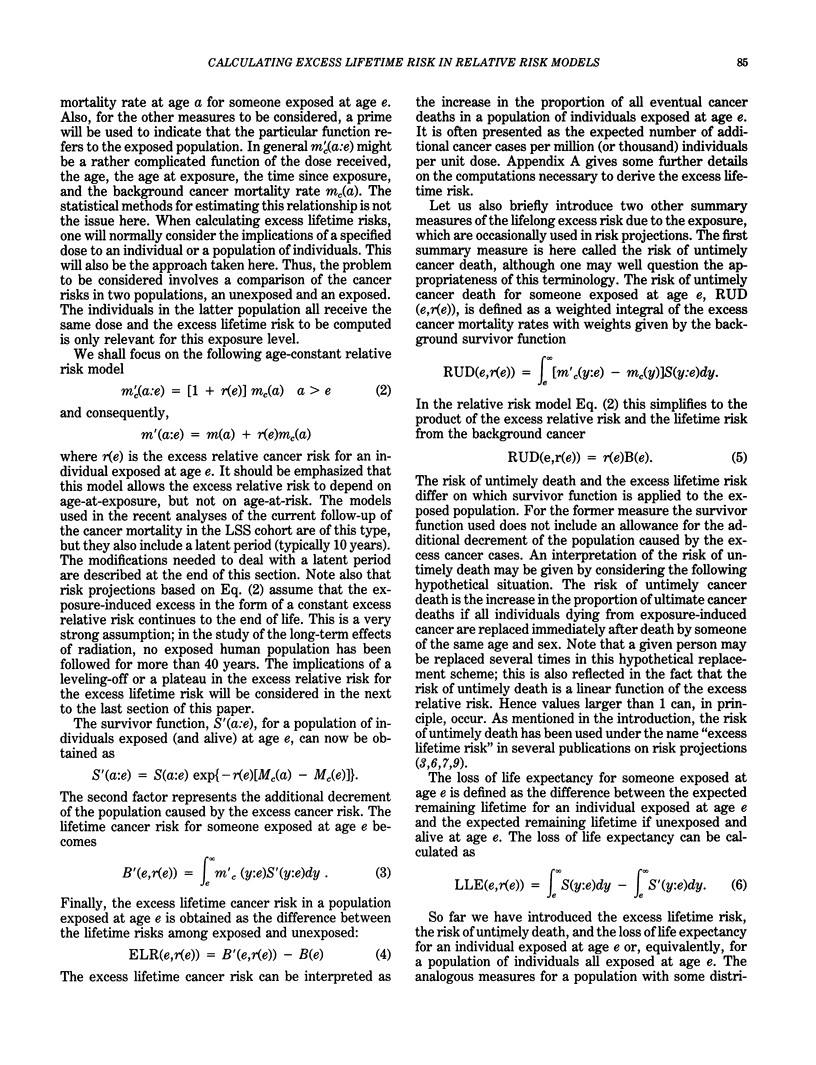
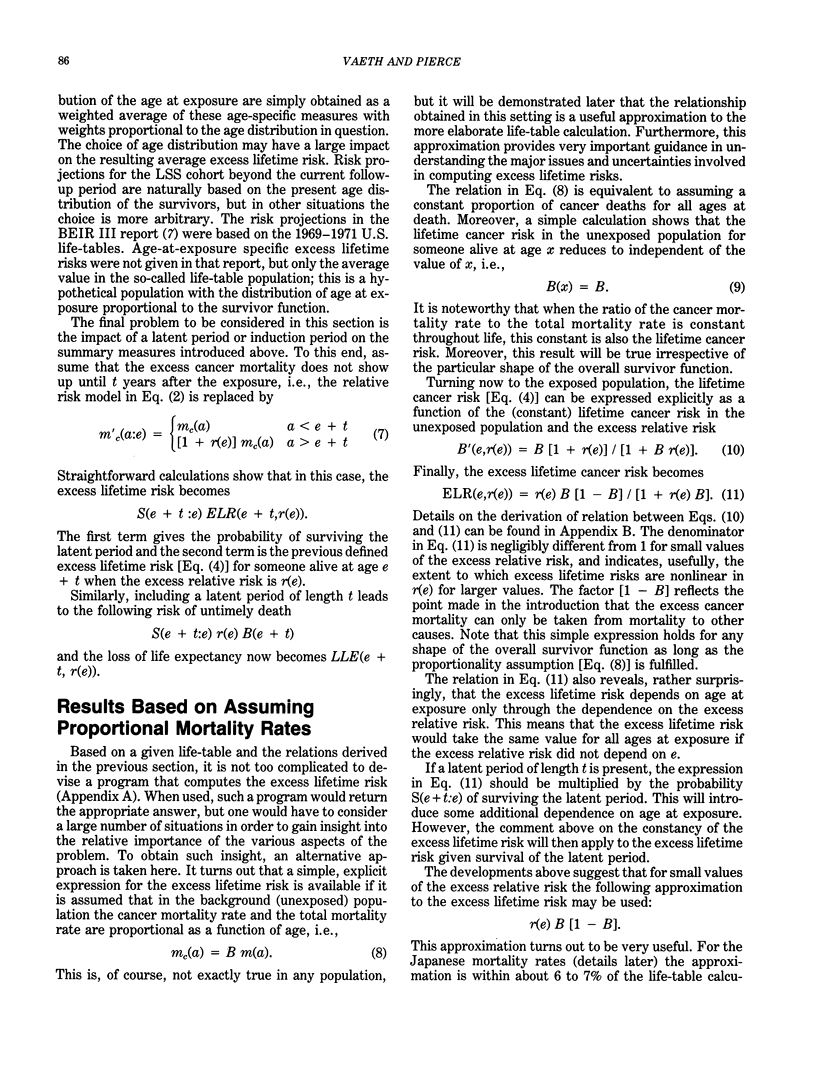
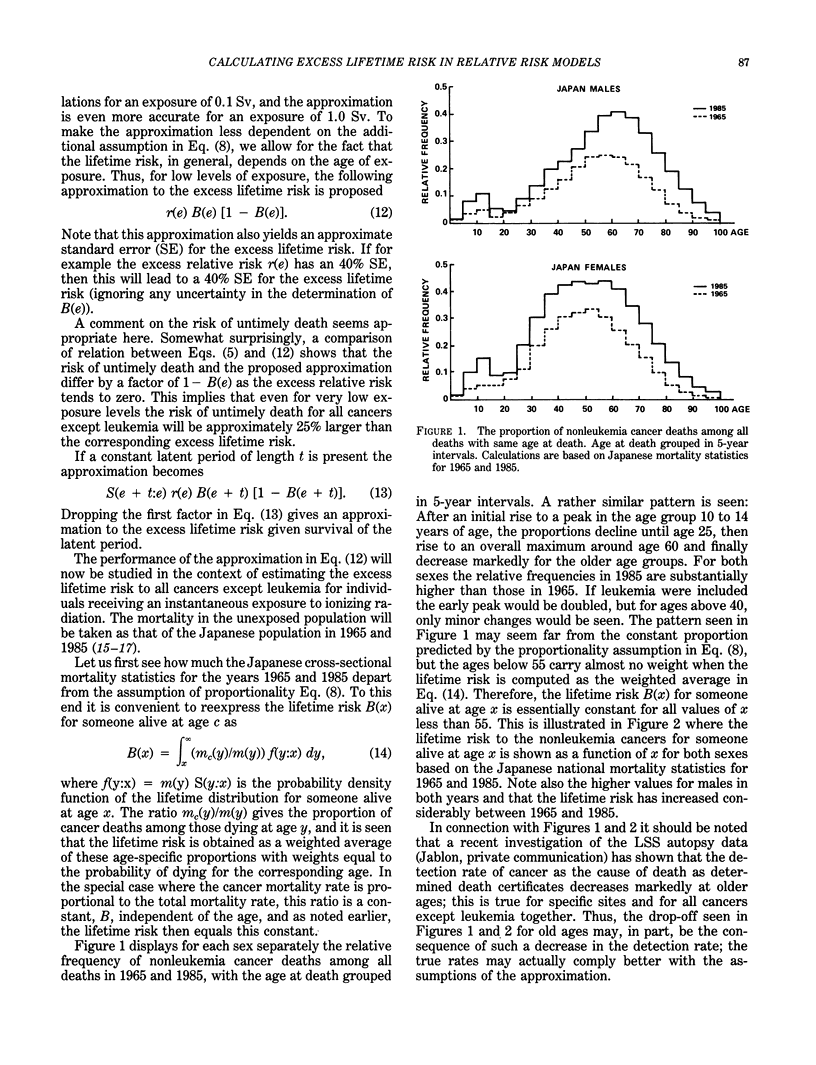
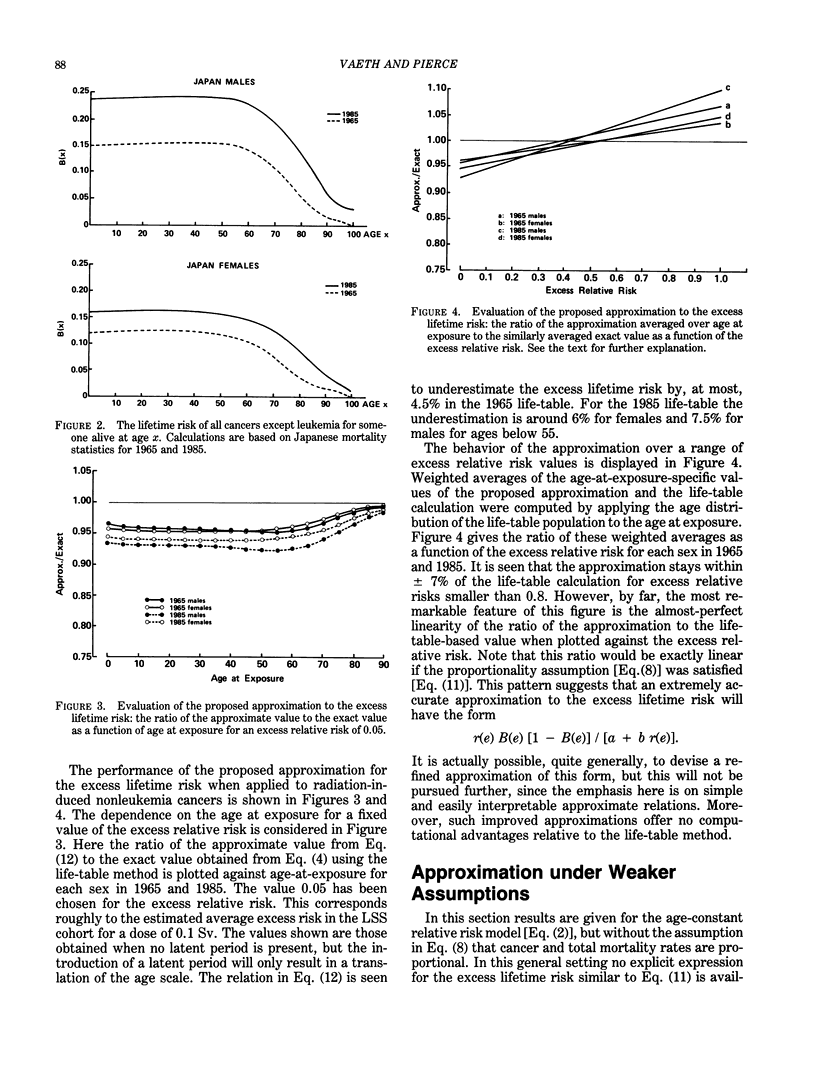
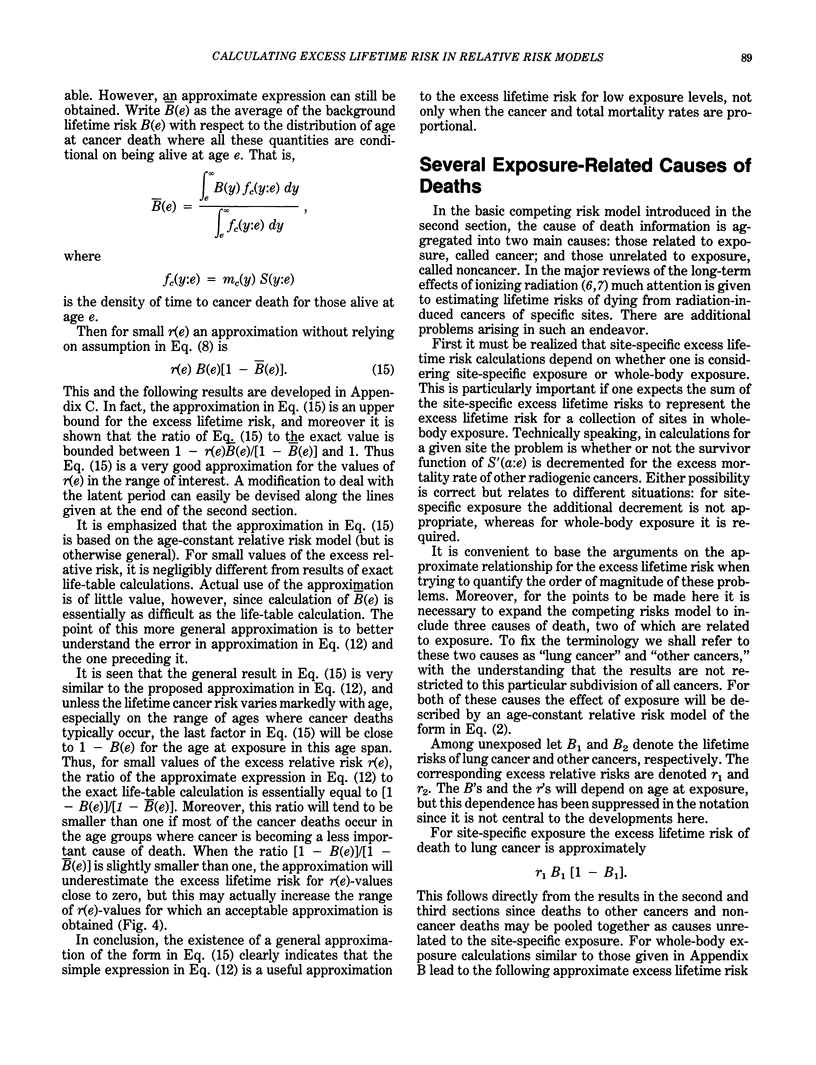
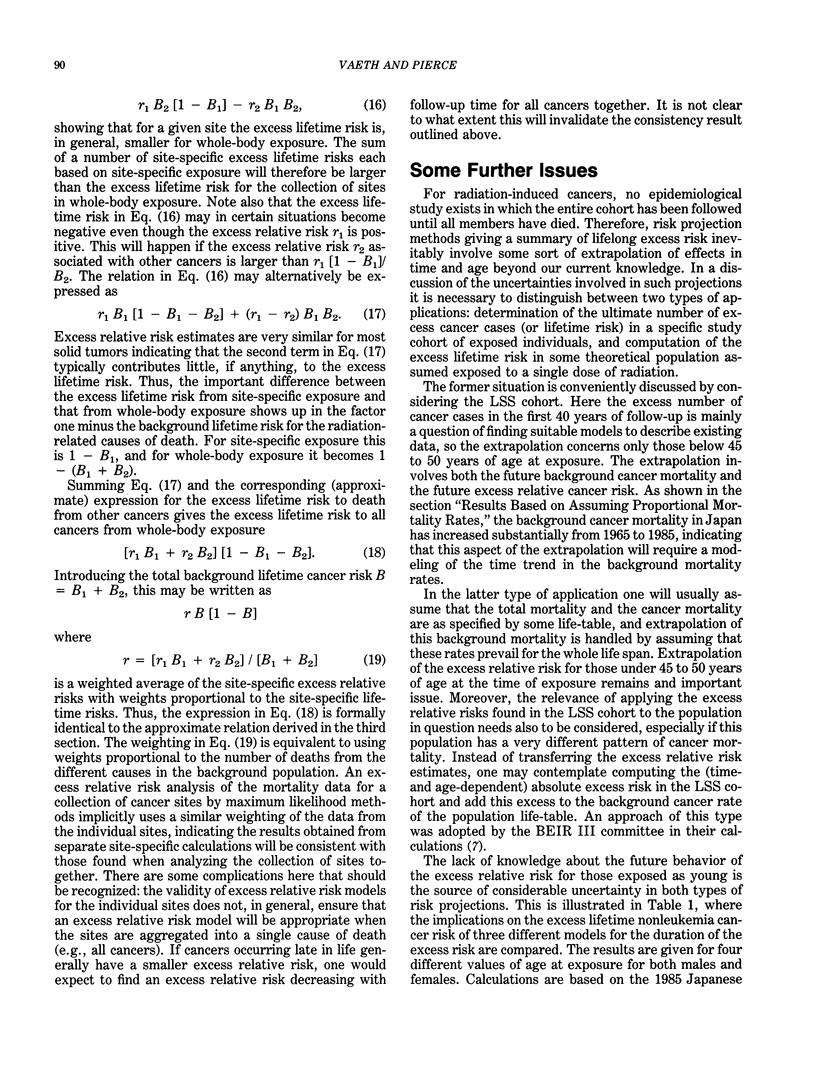
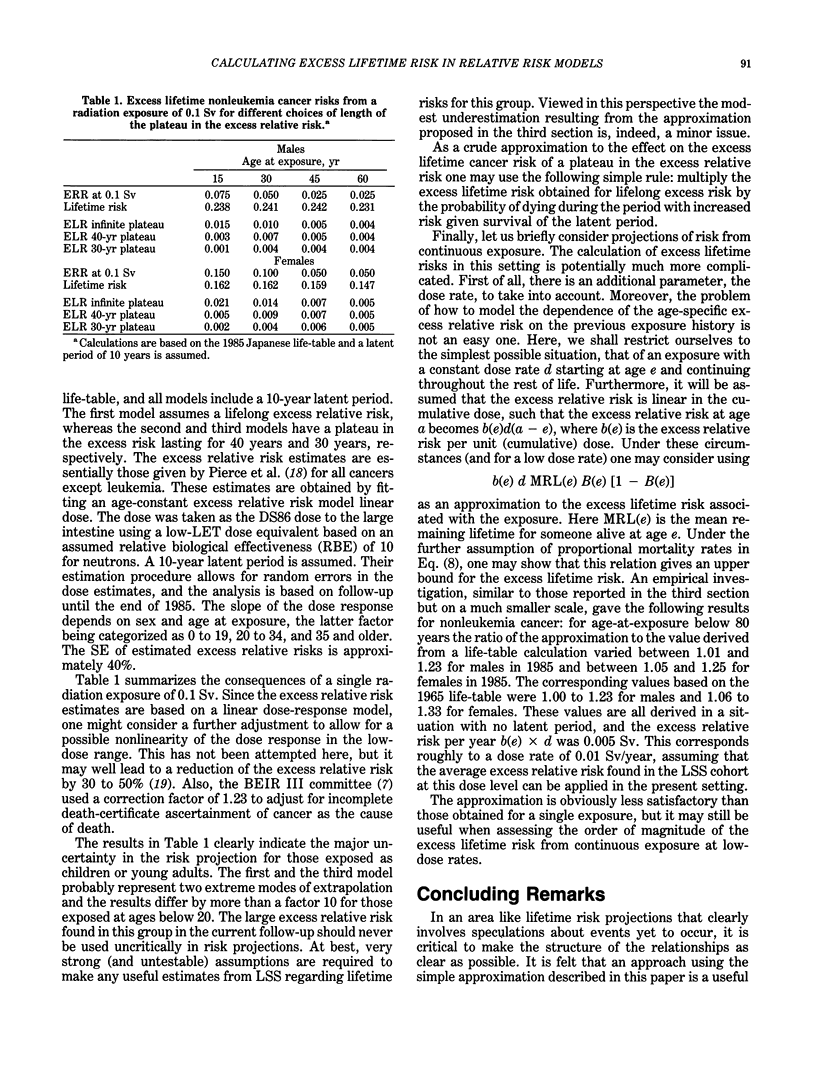
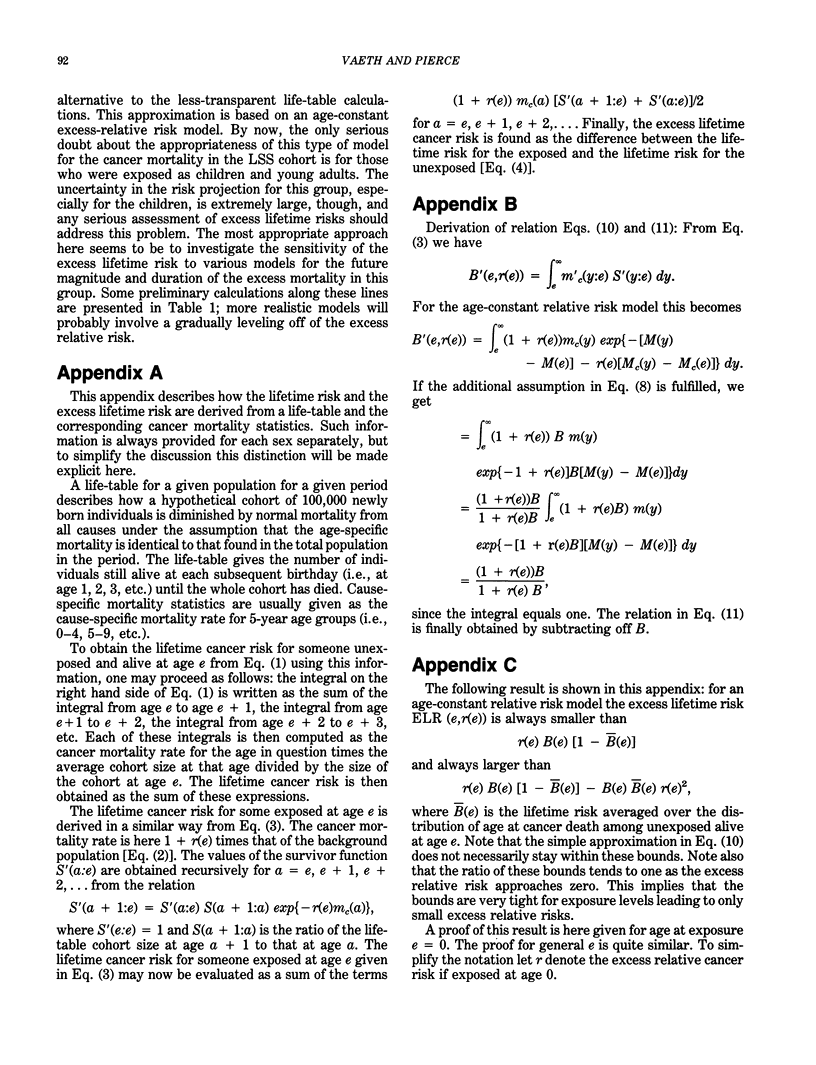
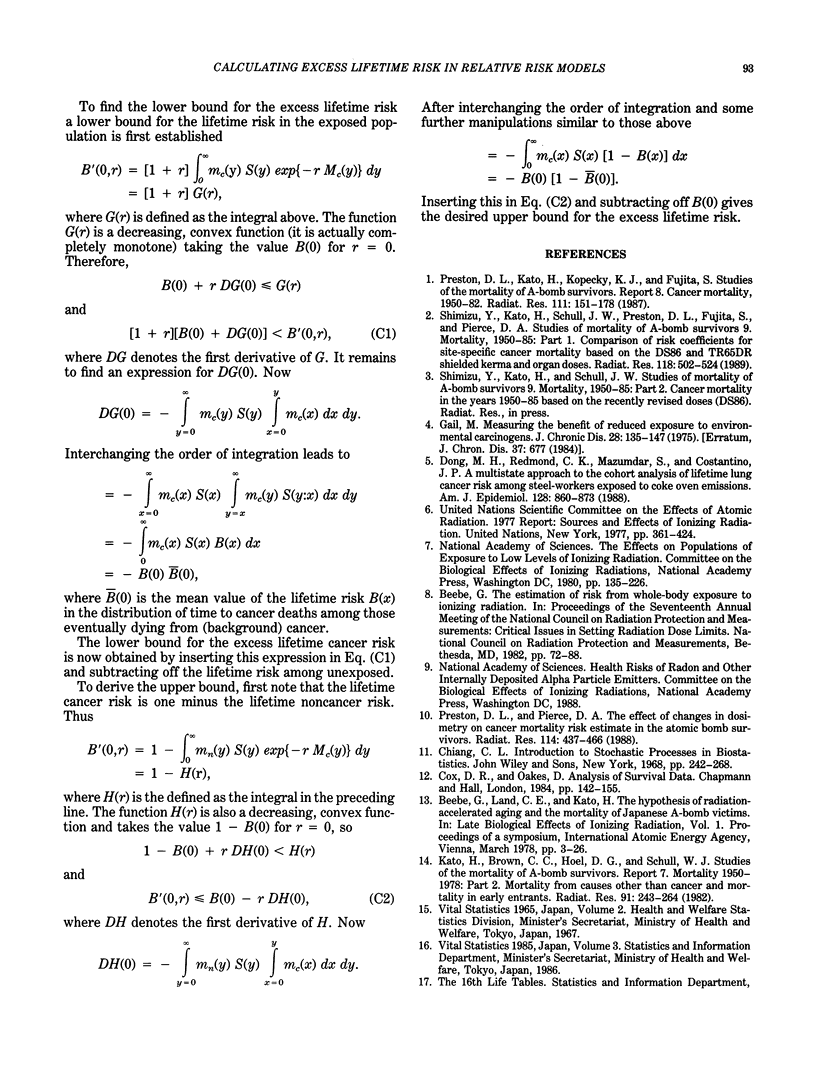
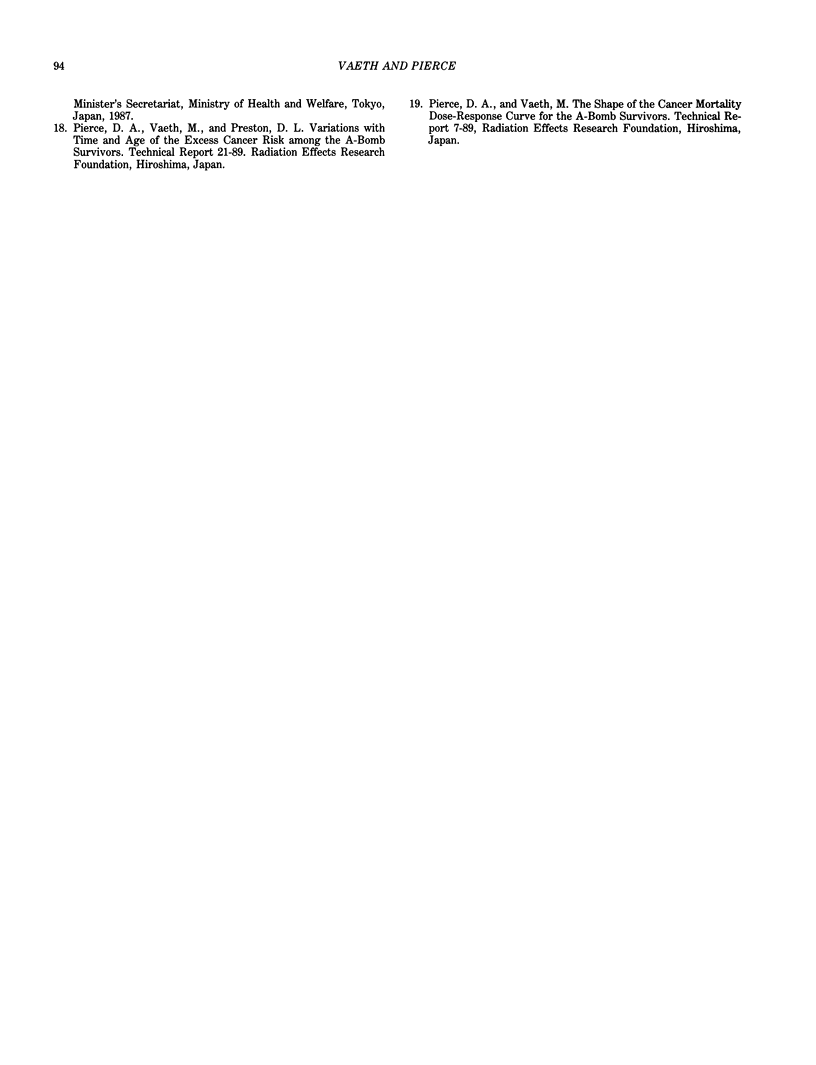
Selected References
These references are in PubMed. This may not be the complete list of references from this article.
- Dong M. H., Redmond C. K., Mazumdar S., Costantino J. P. A multistage approach to the cohort analysis of lifetime lung cancer risk among steelworkers exposed to coke oven emissions. Am J Epidemiol. 1988 Oct;128(4):860–873. doi: 10.1093/oxfordjournals.aje.a115039. [DOI] [PubMed] [Google Scholar]
- Gail M. Measuring the benefit of reduced exposure to environmental carcinogens. J Chronic Dis. 1975 Mar;28(3):135–147. doi: 10.1016/0021-9681(75)90002-8. [DOI] [PubMed] [Google Scholar]
- Kato H., Brown C. C., Hoel D. G., Schull W. J. Studies of the mortality of A-bomb survivors. Report 7. Mortality, 1950-1978: Part II. Mortality from causes other than cancer and mortality in early entrants. Radiat Res. 1982 Aug;91(2):243–264. [PubMed] [Google Scholar]
- Preston D. L., Kato H., Kopecky K., Fujita S. Studies of the mortality of A-bomb survivors. 8. Cancer mortality, 1950-1982. Radiat Res. 1987 Jul;111(1):151–178. [PubMed] [Google Scholar]
- Preston D. L., Pierce D. A. The effect of changes in dosimetry on cancer mortality risk estimates in the atomic bomb survivors. Radiat Res. 1988 Jun;114(3):437–466. [PubMed] [Google Scholar]
- Shimizu Y., Kato H., Schull W. J., Preston D. L., Fujita S., Pierce D. A. Studies of the mortality of A-bomb survivors. 9. Mortality, 1950-1985: Part 1. Comparison of risk coefficients for site-specific cancer mortality based on the DS86 and T65DR shielded kerma and organ doses. Radiat Res. 1989 Jun;118(3):502–524. [PubMed] [Google Scholar]


